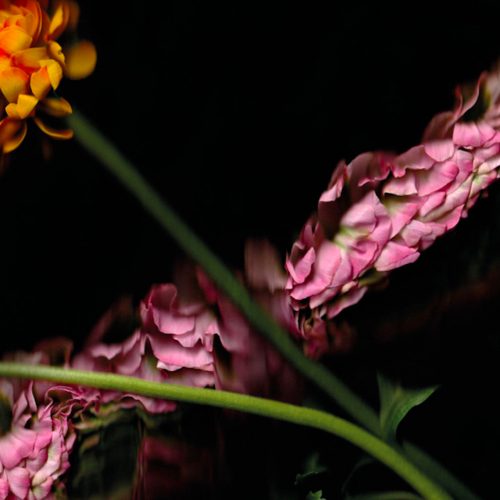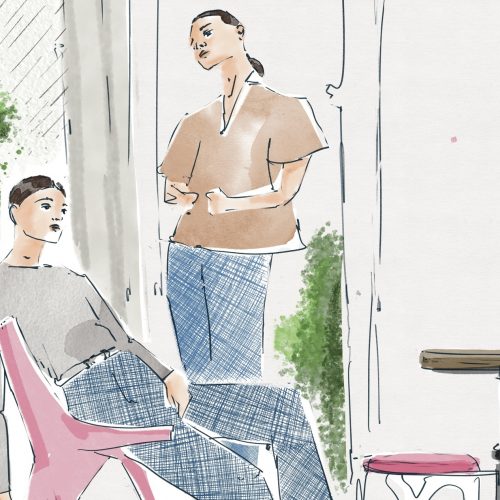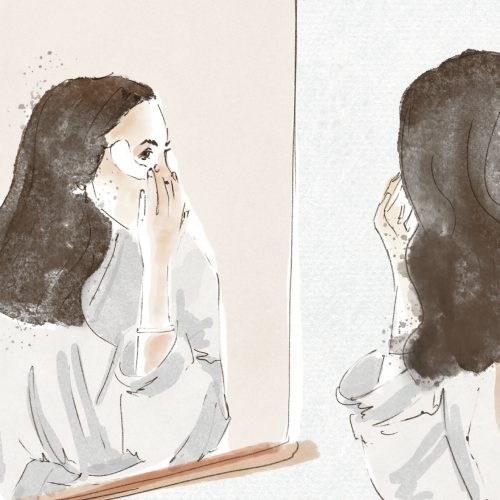Thierry Mugler’s “Couturissme”: The Relationship Between Fashion, People And Nature
"La Chimère", one of the most expensive haute couture dresses in fashion history, sparkles in all the colours of the rainbow: with its countless colourful pearls, feathers, scales, real hair and a golden corset, it looks like the dress of a winged mermaid.
To receive the Luxiders Newsletter, sign up here.
The elaborately created creation by designer Thierry Mugler is part of the retrospective “Thierry Mugler: Couturissme”, which can currently be seen in the Rotterdam Kunsthal. The exhibition, which is conceived like an opera in six acts, takes a look at the imagination and imagination of the French designer, with whom he has revolutionised the fashion world since the 80s.
In addition to “La Chimère”, a total of around 150 other iconic outfits as well as accessories, theatre costumes, videos, photos and sketches by Mugler are on display. His work inspires to reflect the relationship between fashion, people and nature.
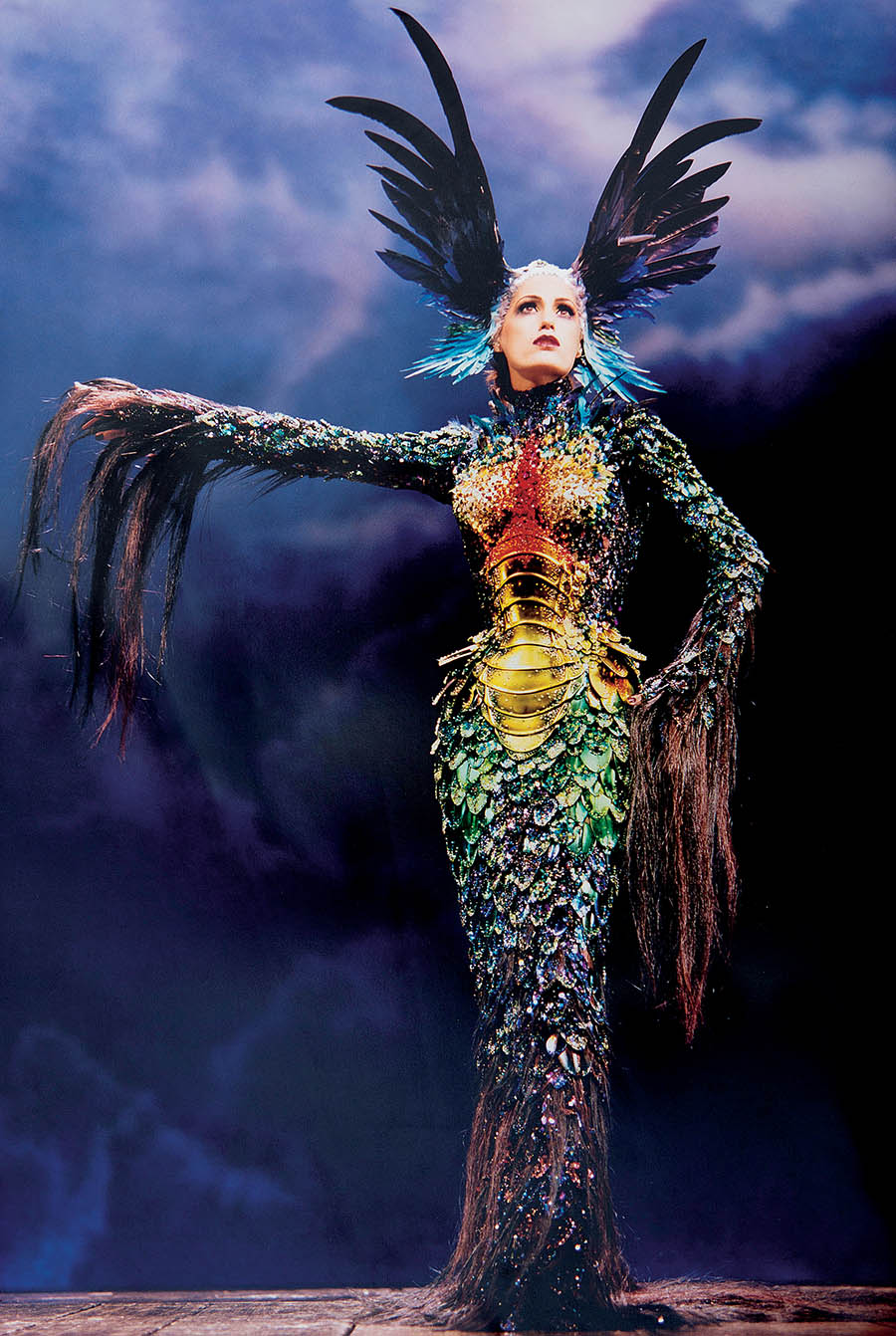
Alan Strutt, Yasmin Le Bon, Palladium, London, 1997 ; Evening Standard Magazine, October 1997. Photo: © Alan Strutt. Outfit : Thierry Mugler, La Chimère collection, “La Chimère” gown, haute couture fall/winter 1997–1998
Metamorphosis of humans and nature
Half human, half fish, half insect, half cyborg: Thierry Mugler has always been known for his extravagant metamorphosis of shapes, materials and role models. The avant-garde couturist makes the wearers of his clothes appear like mystical hybrid beings. He himself draws his inspiration from the “most beautiful animal on Earth: the human being.” (Manfred Thierry Mugler) Contrary to the usual dichotomous way of thinking, Mugler does not separate between humans and animals: they are one for him. This philosophy is evident in many of his creations. Carriers, clothing, nature, material and animals merge here. For example, in his SS 1997 collection “Les Insectes”, in which the designer fused women with insects. The clothes in the collection are fitted with feelers, butterfly wings and black glasses that are reminiscent of insect eyes.
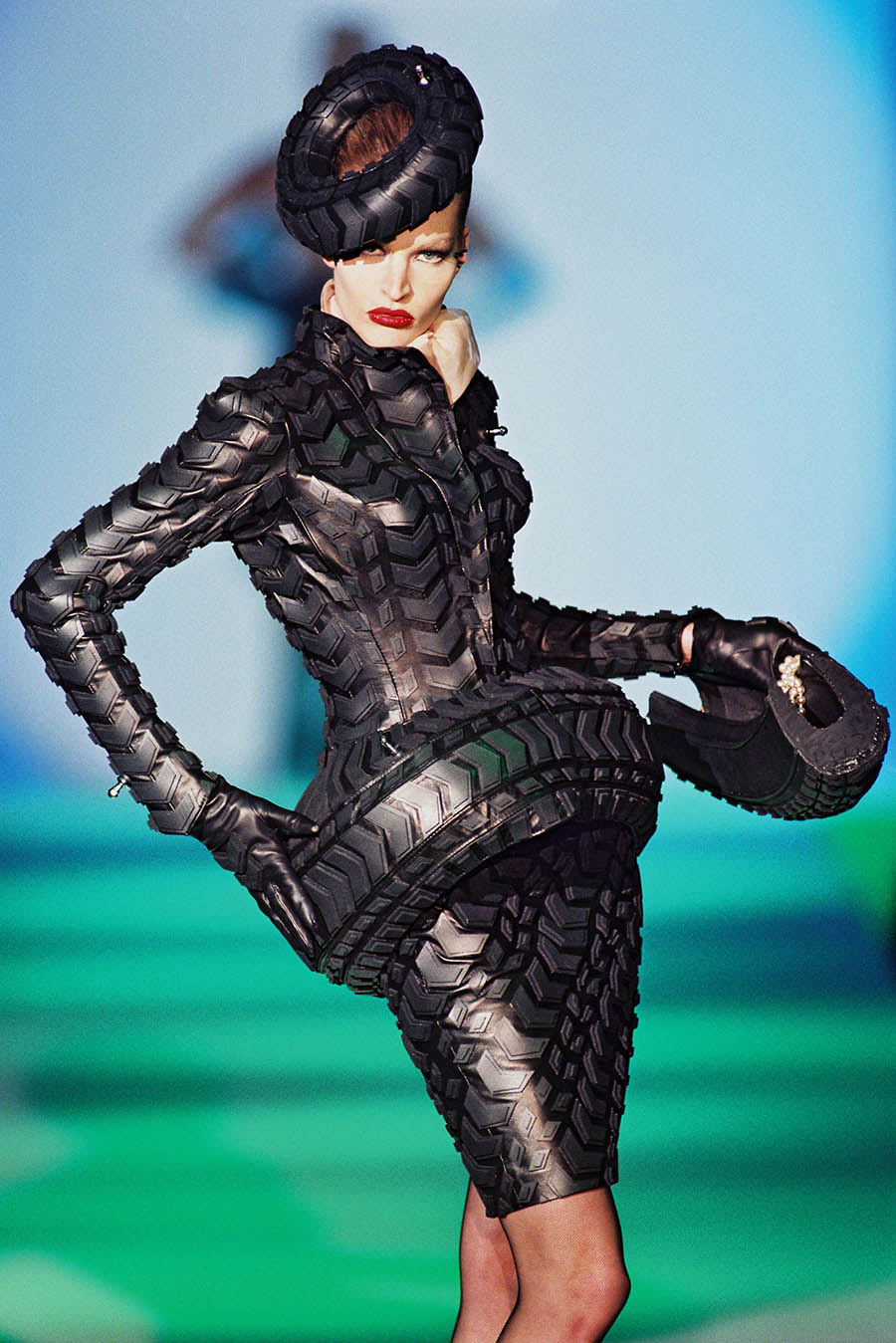
Patrice Stable. Photo: © Patrice Stable. Outfit: Thierry Mugler, Les Insectes collection, haute couture spring/summer 1997
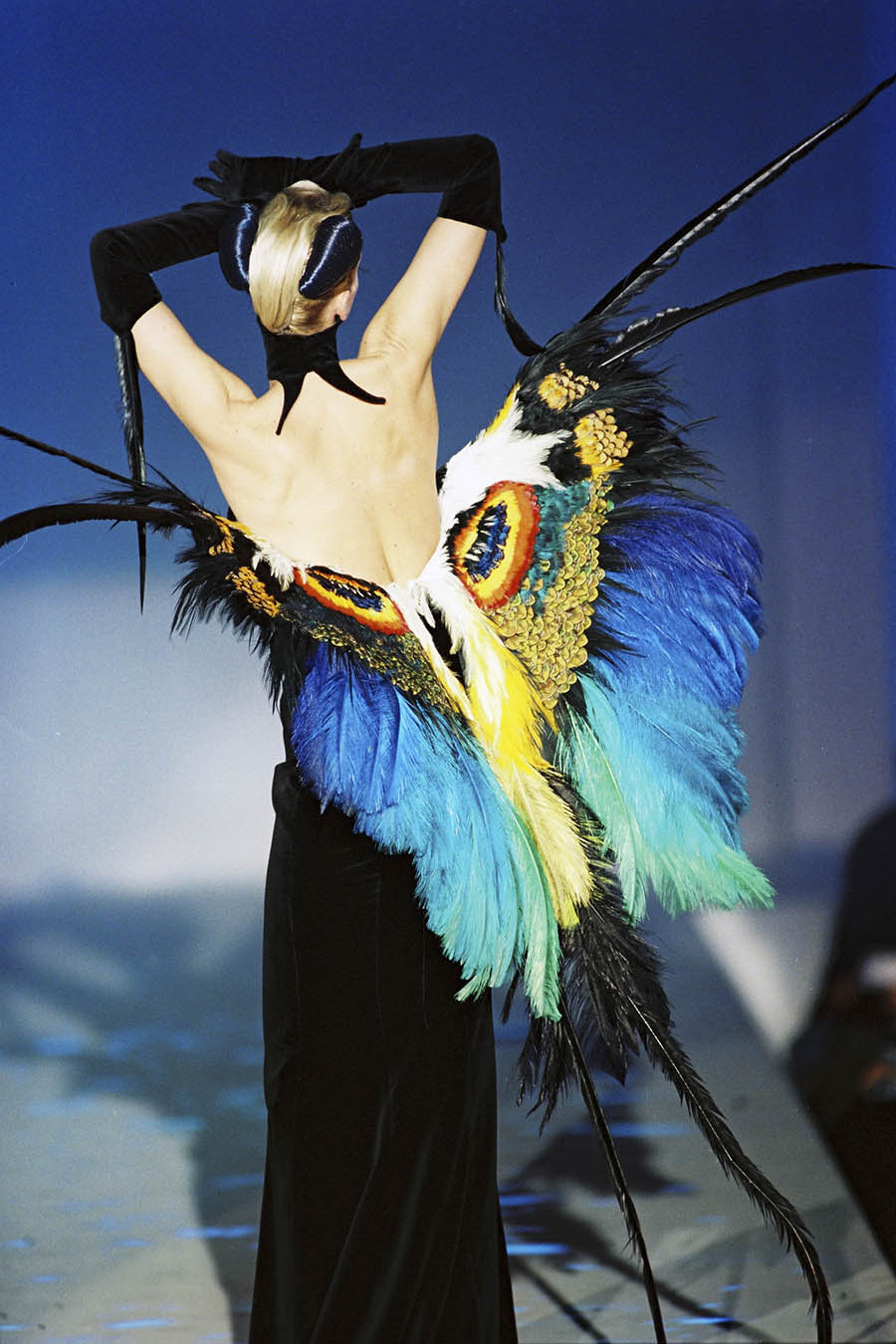
Patrice Stable, Photo: © Patrice Stable. Outfit: Thierry Mugler, Les Insectes collection, haute couture spring/summer 1997
Thierry Mugler is not afraid to use unusual materials. In addition to animal hair like in “La Chimère”, he also integrates chrome car parts, LED, glass and latex into his haute couture. The production and use of these animal and artificial materials certainly do not fully correspond to our current understanding of ecological sustainability.
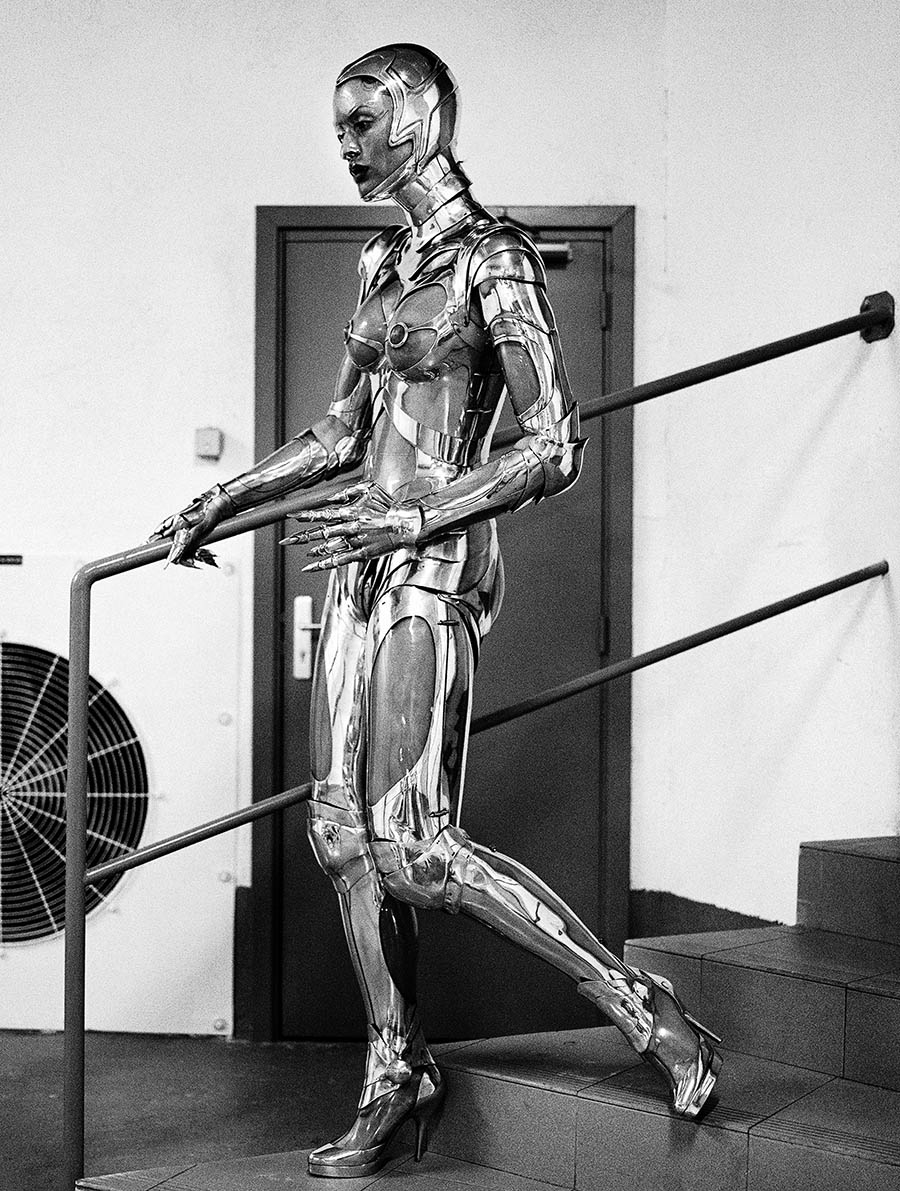
Helmut Newton, Johanna; Vogue (US), November 1995. Photo: © The Helmut Newton Estate. Outfit: Thierry Mugler, Anniversaire des 20 ans collection, prêt-à-porter fall/winter 1995–1996.
Fashion takes from nature and creates new forms
Nevertheless, "Thierry Mugler: Couturissme" inspires to reflect on the relationship between people, nature and clothing. The exhibition emphasizes the ideal, creative and material value of clothing and is reminiscent of a time before fast fashion, when fashion was not yet considered a disposable item and materials were not yet considered replaceable. Rather, it makes it clear: fashion is the embodiment of someone's imagination, the result of elaborate imagination and manufacturing power and the arrangement of valuable materials and limited resources. Fashion takes nature and creates new forms.
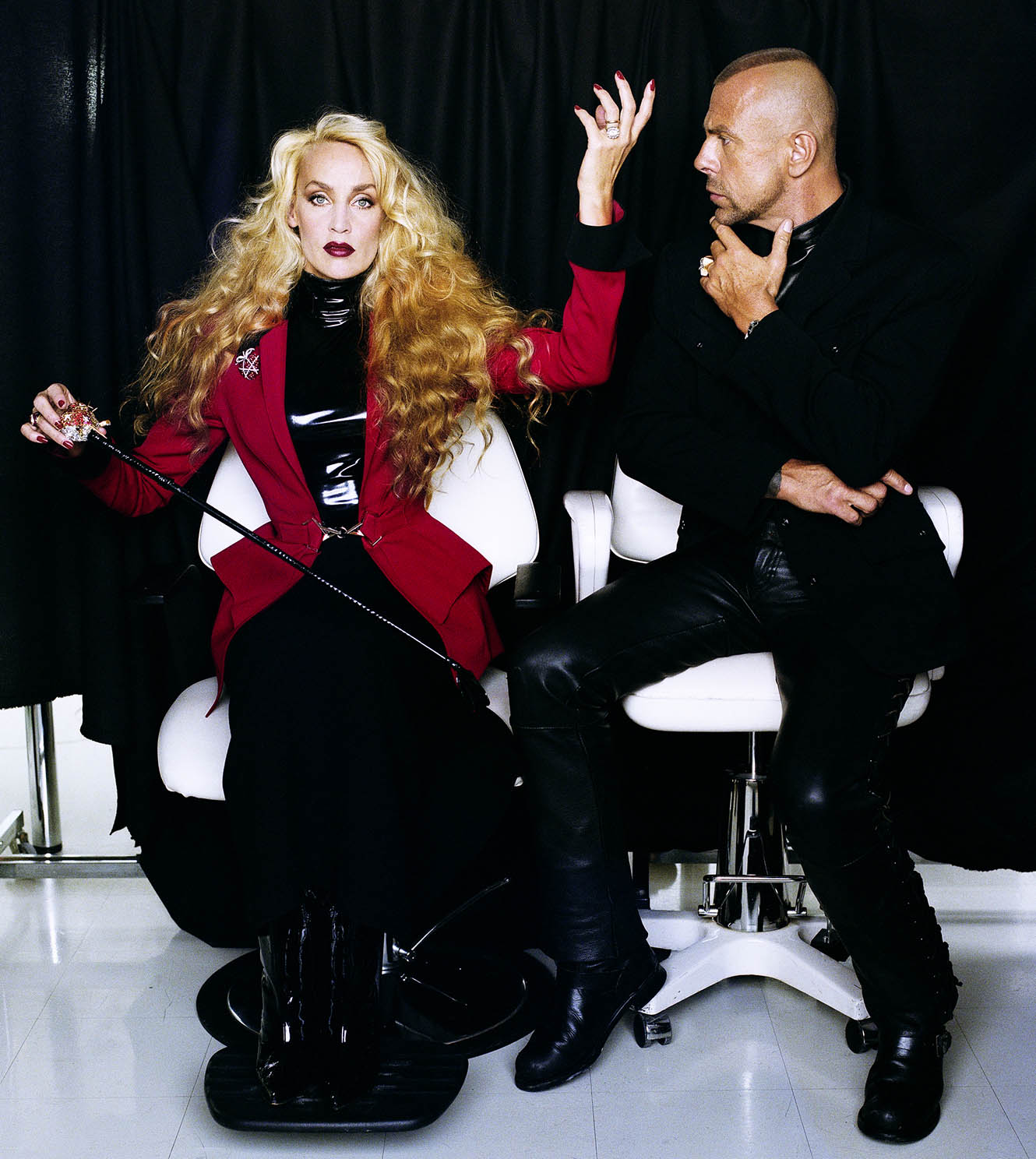
Helmut Newton, Jerry Hall and Thierry Mugler, Paris, 1996. Photo: © The Helmut Newton Estate.
About Thierry Mugler
Throughout his career, Thierry Mugler has worked with well-known filmmakers, architects, photographers and artists such as Helmut Newton, Andrée Putman and Dominique Issermann. He directed various short films and music videos, such as George Michael’s “Too Funky”. In addition to his own haute couture, Mugler created theater and circus costumes, including for the performance of Shakespeare’s Macbeth at the Théâtre-Français and Festival d’Avignon, and dressed stars such as David Bowie, Lady Gaga and Céline Dion. Thanks to its theatrical designs, Mugler is one of the most important avant-garde designers of our time. But radical changes and novelty in fashion have always been limited by the human body, materials, technology and morals. With the steady acceleration of the global fashion industry, other factors added to it: "money, marketing and the crazy rhythm of the collections" (Manfred Thierry Mugler) - and so the designer ended his career in 2001.
The exhibition "Thierry Mugler: Couturissme" can be seen at the Kunsthal Rotterdam until March 8, 2020.
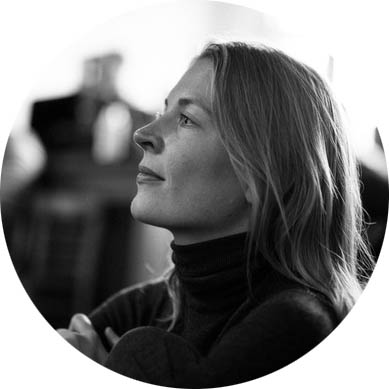
+ Words: Lena Bäunker
After living in Hamburg, Shanghai, Groningen and Milan, now Lena works and studies in Rotterdam. Lena is committed to Fashion Revolution, helping sustainable brands tell their stories, and writing about the interfaces between sustainability, art, culture and business.

